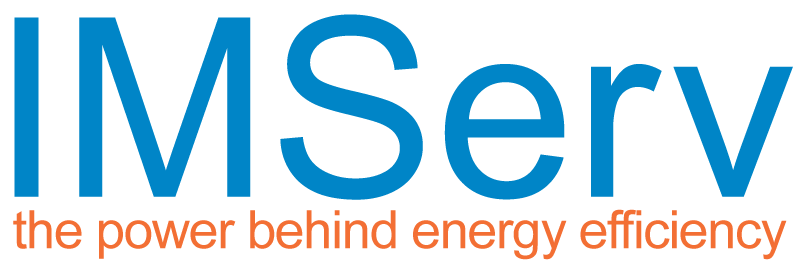
Overview
Public transport company The Go Ahead Group operates bus and rail services throughout the UK. Go Ahead is one of the UK’s leading providers of quality public transport, employing around 27,000 people and transporting just over 1 billion passengers via buses and trains each year. Priding itself on its high levels of social and environmental responsibility the company has a commitment to minimise the impact its operations have on the environment and report annually to all stakeholders. With this in mind it’s not surprising that The Go Ahead Group has a strong motivation to reduce energy costs and carbon emissions.
The company has annual site energy costs of approximately £10 million, using around 90m kWhs of electricity each year for lighting, including all platform lighting at railway stations and generally for all its bus garages. In addition, The Go-Ahead Group uses in excess of 50m kWhs of gas.
With a goal to reduce CO2 emissions per passenger journey by 20% by 2015 The Go-Ahead Group needed to improve the accuracy of the data used in all energy reporting in order to understand how it was performing against its target and also to avoid the unpredictable variations that impact the company’s budgets and cash flow. Chris Grinsted, Group Environment and Energy Manager at The Go Ahead Group was tasked with looking at ways in which this could be achieved. The company has over 600 sites and has approximately 730 electricity supplies plus 120 smart Sub Meters and over 250 gas supplies. With an array of sites ranging from a 32-acre train maintenance depot to tiny, unmanned train stations, the need for a complete overview of site energy usage was paramount.
Chris explains, “Although we had never used an energy data management provider before, we knew that gaining greater insight into our energy usage was the only way we could reduce our energy costs and carbon emissions. Good quality energy data is essential not only to see if you are achieving your targets but also to assess whether targets are in fact realistic. Basing targets on estimated or incomplete data will merely distort the results and a true reflection of any energy reduction efforts cannot be seen. It was also an important aspect of being able to comply with CRC legislation.”
Driving Energy Efficiency with IMServ Technology
Across the 600 plus sites in The Go-Ahead Group’s portfolio, 40 were originally registered in the half hourly market – where the energy usage is recorded automatically every half hour. The only form of visibility on this energy usage that The Go-Ahead Group received was pages and pages of raw data on spreadsheets.
“Having time to read and digest this information would take forever and it’s just not practical,” said Chris.
“We looked at a number of independent energy management providers but chose IMServ as it offered the most competitive price, had a good reputation for service and open access.”
Now with the help of IMServ, The Go-Ahead Group receives accurate energy information with added intelligence through Energy DataVision (EDV), an easy to use and secure web based tool. Energy consumption from all the registered half hourly sites can now be viewed through one window, eliminating the need to plough through pages of spreadsheets. Data can be viewed in its simplistic form through graphs showing profile data or tables detailing registered reads, or at a more sophisticated level by benchmarking and monitoring sites.
“IMServ is helping us to meet our environmental requirements on a number of levels and is great at supporting us with pulling together our CRC Evidence Pack and CSR reporting,” explains Chris. “It’s reassuring to know that the consumption data is 100% accurate and reliable.
“The company is also helping us accurately quantify the savings we are achieving via efficiency improvements, for example lighting upgrades and identifying some unusual spikes in consumption which is enabling us to send emails alerting our site staff to investigate and put in place behavioural changes.”
Rolling Out
To obtain a greater insight into the consumption across The Go-Ahead Group’s vast portfolio, a roll out of non-half hourly automated meter reading (NHH AMR) was planned. However, through this exercise it soon became apparent that some sites registered as non-half hourly were in fact using so much energy that they should be classed as half hourly.
Approximately 60 supplies changed profile class, which enabled The Go-Ahead Group to re-negotiate the electricity supply contract for these supplies – this alone has saved The Go-Ahead Group some £300,000.
AMR’s were installed on the additional non-half hourly electricity supplies, providing the same energy intelligence as those registered as half hourly. Now The Go-Ahead Group benefits from an increased high-level overview of its energy usage.
Today The Go-Ahead Group has access to accurate energy data for 90%+ of its entire portfolio. Previously, the company only had Half Hourly smart metering for 30% of its electricity and none of its gas consumption.
What’s more with a far higher quality of data and additional consumption profiles The Go-Ahead Group is now able to benefit from new flexible procurement arrangements, so lessening its exposure to market risk and price volatility associated with some fixed term / fixed price contracts.
Chris concluded, “Through taking these steps we are on the right track to meet our energy targets. The roll out of non half hourly AMR has led to far better reporting on our consumption, costs and performance against targets. It is providing us with a comprehensive understanding of how and where energy is used and gives us quantification of the savings we are achieving through our investment in energy improvements.”
